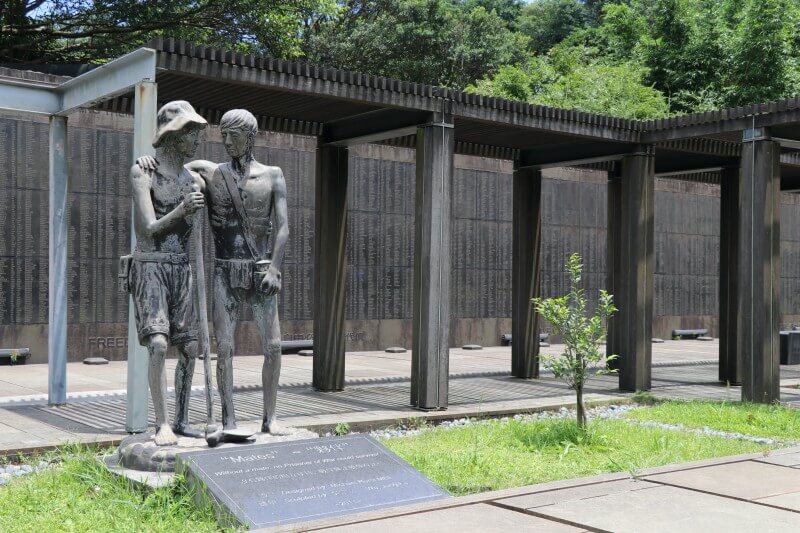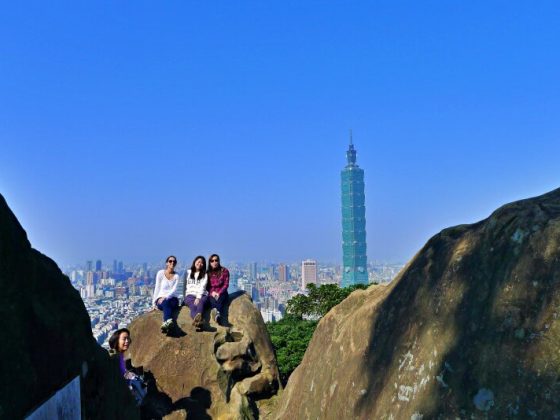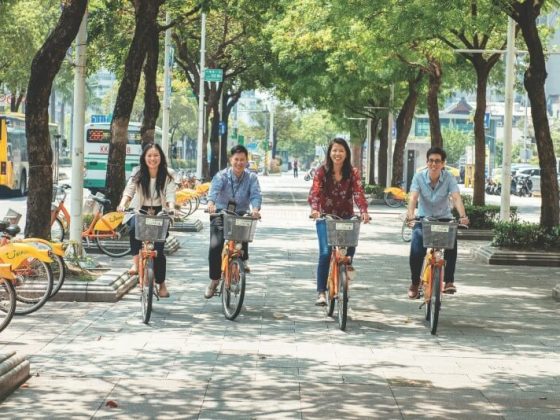An hour north of Taipei in New Taipei’s Ruifang district (瑞芳) is the town of Jiufen (九份), one of Taiwan’s most picturesque and popular towns. Built outside of an active gold mine during Taiwan’s Japanese occupation, once a POW camp and said to have been the inspiration for Hayao Miyazaki’s hit animated film Spirited Away, Jiufen and nearby Jinguashi (金瓜石) have a rich and interesting history and there is much more reason to visit the area than just its famous old street. Here is a guide to some of the things you should do when you visit Jiufen. (Read also: Jiufen and Jinguashi: Taiwan’s Golden Getaways)
Jiufen Old Street (九份老街)
While there is more to Jiufen than its old street, you definitely still can’t miss out on visiting there when you’re in town. Packed full of shops, stalls, cafes and color, it is a foodie’s paradise with all kinds of local delicacies on offer ranging from fish ball soup to xiaolongbao to stinky tofu to sweet taro ball soup. There are also many tea houses where you can sit and sip on the likes of tieguanyin and Alishan high mountain tea while you overlook the sea, including the very popular Amei Teahouse (阿妹茶樓) which is partly responsible for Jiufen’s association with Spirited Away. The staircase leading to Amei Teahouse is one of the most charming and prettiest lanes off the old street, while if you continue and follow the street to the end, you’ll reach the Jishan Street Viewing Platform (基山街觀景平台), a photogenic vantage point which also marks the end of the touristy part of town.
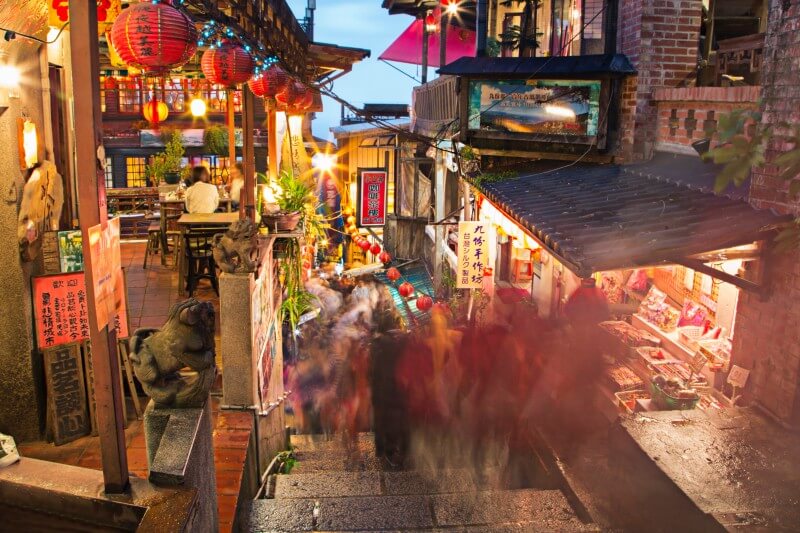
To get to Jiufen Old Street, we recommend taking the bus from MRT Zhongxiao Fuxing Station (忠孝復興站) in Taipei. You can hop on the 1062 at Exit 2 and stop right by the old street, with the journey taking an hour and 15 minutes or so. However, take note that it is a popular route and the bus often fills up quickly during peak hours. For a round trip from Taipei, it costs NT108 per person.
Gold Museum (黃金博物館)
As previously mentioned, a huge part of the local area’s history relates to gold and gold mining. In nearby Jinguashi, just ten minutes past Jiufen, the Museum of Gold, also known as Jinguashi Gold Ecological Museum, Gold Ecological Park or New Taipei City Gold Museum, is a two-floor museum detailing the history of the gold mining industry in Taiwan and beyond.
Open from 9.30am-5.30pm (6pm on weekends), the exhibits are translated into English with the highlight being the 220kg ingot of 99.9% pure gold on the second floor. Activities include a gold panning and you can also explore a former functioning gold mine, while there are also exhibition halls, art and old Japanese residences to see. Also, if you didn’t fill up too much with snacks on the old street, you can grab a coffee at the onsite café that comes topped with ice cream and a gold leaf. Like Jiufen, the museum/ecological park offers some pretty picturesque views overlooking the sea and natural surroundings. The 1062 and 788 buses running through Jiufen will get you to Jinguashi or you can catch them from Ruifang Station should you arrive in the area by train.
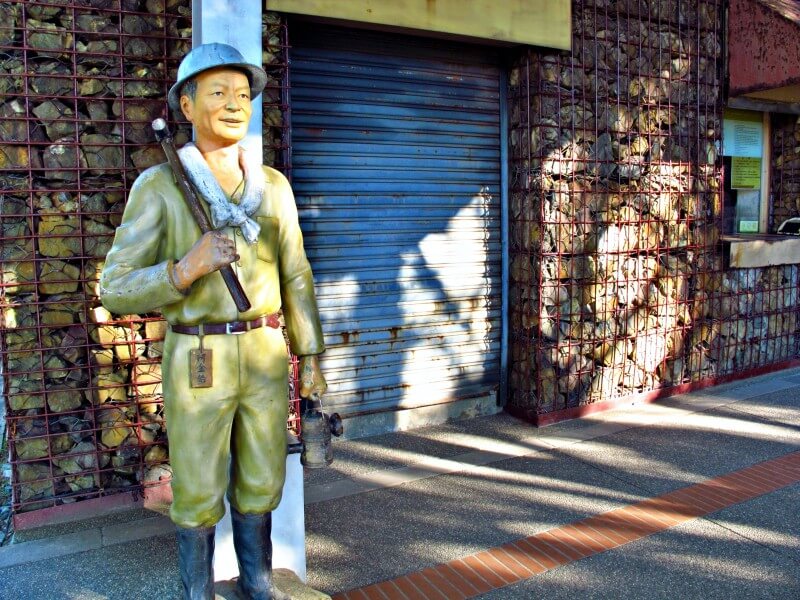
Teapot Mountain (茶壺山)
Make sure you’ve packed footwear suitable as it’s time for a hike. Starting inside the grounds of Gold Museum, Teapot Mountain’s hiking trail is a steep one. The trailhead is located near Tunnel #5. Just past the tunnel is a bridge over the river and from there you turn right to start the trail. The majority of the hike is a dirt road that leads all the way up to the top of Teapot Mountain which is called so due to the rocks on top, which you can climb on and in, resembling a teapot. Most of the trail is very exposed to the elements so, either don’t go during the height of summer, or make sure you take a lot of sun protection such as sun cream and hats. (You might also like: Take a Hike: the Best Hiking Trails in Taiwan)
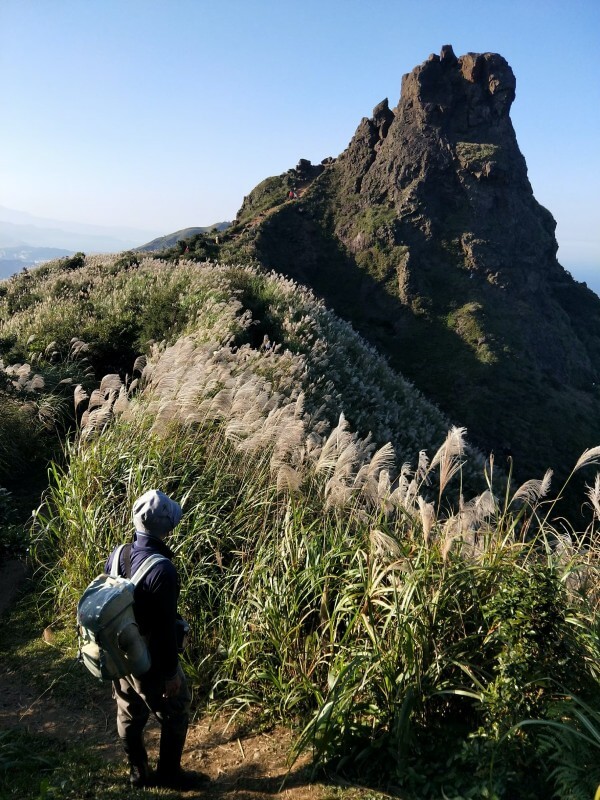
Jinguashi Shinto Shrine (黃金神社)
Also located near Tunnel #5 are the stairs leading up to the Jinguashi Shinto Shrine, also known as the Ōgon Shrine. To get there it’s approximately a 20-minute upstairs walk, or you can get there while looping back down from the top of Teapot Mountain. These photogenic temple ruins include two torii (Japanese ceremonial gates), pillars and stone foundations. Built by the Japan Mining Company in 1933, the shrine was dedicated to the three Kami spirits of metallurgy. Despite not being what it once was, it is still worth climbing up there to admire the breathtaking view. Again, you can get there by taking the bus to Jinguashi; it’s a 15-minute walk from the museum.
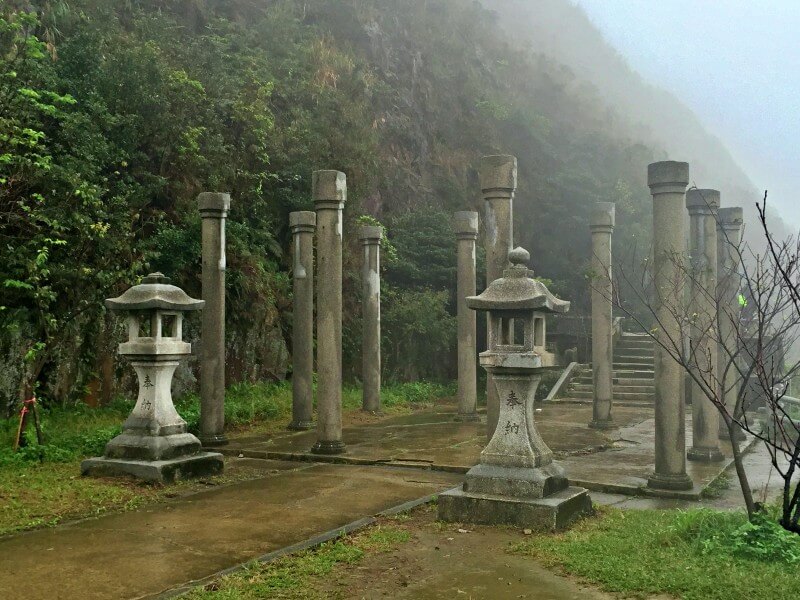
Kinkaseki POW Camp Memorial Park (國際終戰和平紀念園區)
A short walk from Jinguashi is the memorial park at the former site of Kinkaseki POW Camp, one of the most notorious Japanese POW camps from WW2; home to prisoners captured by the Japanese during the war. Opened in 1942, the initial prisoners were from Singapore, but the bulk of the captives were Brits from the allied forces. A copper mine, the camp closed in 1945 when the transport of copper back to Japan became too difficult due to too strong of an allied naval presence; the prisoners were relocated to the Kukutsu facility in Xindian (新店). A place of great suffering and recognized as one of the most brutal camps to ever exist – prisoners were forced to work grueling shifts in the mines – a visit to Kinkaseki is an opportunity for some reflection and some perspective and a chance to recognize and appreciate the sacrifices those before us made so we can live our lives how we do today.
The park includes a memorial wall naming all 4,344 allied soldiers who suffered in Taiwan at the hands of the Japanese during the war. A sobering end to your Jiufen trip but definitely a worthwhile stop. (Read also: Remembering Taiwan’s Kinkaseki POW Camp on Tomb Sweeping Day)
